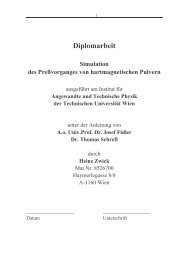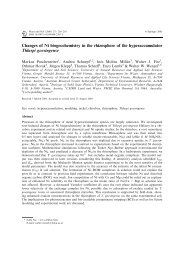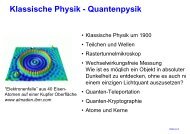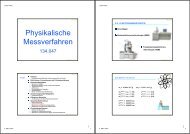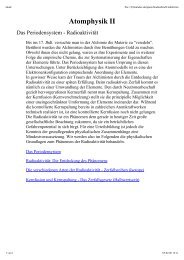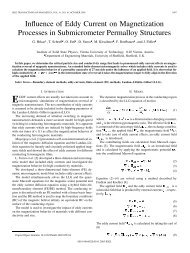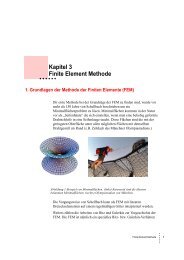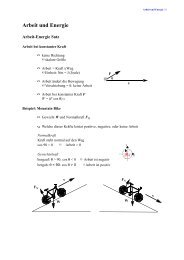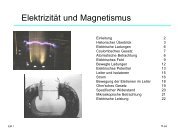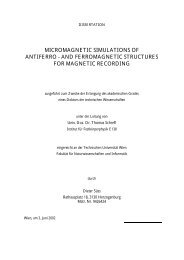Read Back Signals in Magnetic Recording - Research Group Fidler
Read Back Signals in Magnetic Recording - Research Group Fidler
Read Back Signals in Magnetic Recording - Research Group Fidler
Create successful ePaper yourself
Turn your PDF publications into a flip-book with our unique Google optimized e-Paper software.
V<br />
2l + N2πr′ ≈ = 3.57 µV<br />
σrπ L<br />
2 2<br />
Numerical Methods<br />
(4.65)<br />
With the FEM we get V 2 = 3.81µV . The difference is aga<strong>in</strong> due to the smaller cross sectional<br />
area of the meshed model.<br />
H z (r=0) [A/m]<br />
0.20<br />
0.15<br />
0.10<br />
0.05<br />
0.00<br />
0<br />
-100 -50 0 50 100 150 200<br />
z [mm]<br />
Figure 4.4: The model of the coil (left). The color code shows the l<strong>in</strong>ear decrease of the<br />
electric potential <strong>in</strong>side the wire. The chart (right) shows the magnetic field of a solenoid <strong>in</strong><br />
z-direction at the middle axis. The two dotted l<strong>in</strong>es identify the position of the solenoid.<br />
The second graph shows the relative error of the coil’s magnetic field calculated with FEM<br />
calculation compared to the solenoid’s field.<br />
The magnetic field for a perfect solenoid (hollow cyl<strong>in</strong>der with <strong>in</strong>f<strong>in</strong>itesimal th<strong>in</strong> nappe) with<br />
length L, face current density J and radius r′ can be calculated exactly along the middle axis<br />
(z-axis):<br />
⎛ ⎞<br />
J L−z z<br />
Hz( z)<br />
= ⋅ ⎜ + ⎟.<br />
(4.66)<br />
2 ⎜ 2 2 2 2<br />
( L− z) + r′<br />
z + r′<br />
⎟<br />
⎝ ⎠<br />
When we now approximate the coil by such a solenoid and set the face current density equal<br />
to<br />
NI<br />
J = , we have the possibility to compare the field of the solenoid H z with that of the<br />
L<br />
calculated field of our model. The run of the magnetic field along the middle axis of the<br />
solenoid is shown <strong>in</strong> Figure 4.4. In addition the relative error of the FEM calculated coil<br />
compared with the solenoid is given. So the quantitative values are aga<strong>in</strong> consistent.<br />
10<br />
8<br />
6<br />
4<br />
2<br />
Error [%]<br />
56



